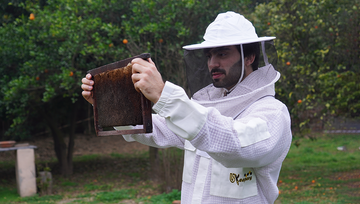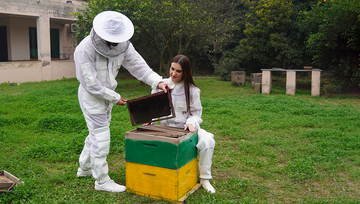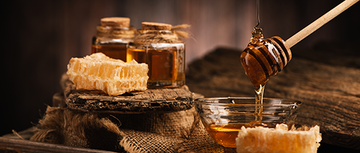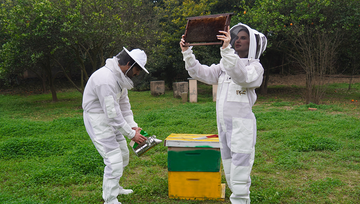Honey is more than just a delicious spread for your morning toast; it's a marvel of nature's engineering and the result of an intricate process performed by one of the tiniest creatures on Earth – the honeybee. Let's delve into the fascinating journey of how bees transform flower nectar into the golden elixir we know and love.
Step 1: Foraging for Nectar
The honey-making process begins with the diligent foraging efforts of worker bees. Venturing out from the hive in search of food, they visit flowers rich in nectar. Using their long, tube-like tongues called proboscis, they suck up the sweet liquid from the blossoms and store it in their honey stomachs, separate from their regular stomachs.
Step 2: Return to the Hive
Once the foragers have gathered a sufficient load of nectar, they return to the hive, where they regurgitate the collected nectar into the mouths of other worker bees. This process is known as trophallaxis and allows the nectar to be passed from bee to bee, mixing with enzymes along the way.
Step 3: Enzymatic Transformation
Upon receiving the nectar, worker bees add enzymes such as invertase, amylase, and glucose oxidase through regurgitation and mixing. These enzymes break down the complex sugars in the nectar into simpler sugars like glucose and fructose, making it more digestible and resistant to spoilage.
Step 4: Evaporation and Dehydration
The transformed nectar, now referred to as honey, is still too watery to be stored long-term. To reduce its water content and thicken it into honey, worker bees fan their wings vigorously over the open cells of the honeycomb, creating airflow that aids in evaporation. This process continues until the moisture content of the honey is reduced to around 17-20%, making it inhospitable to bacteria and resistant to fermentation.
Step 5: Sealing the Honeycomb
Once the honey reaches the desired consistency, worker bees cap the cells of the honeycomb with beeswax, sealing them off from the outside environment. This protective seal ensures that the honey remains uncontaminated and preserves its quality until it's needed as food for the colony.
Step 6: Harvesting
Finally, beekeepers harvest the ripe honeycomb frames from the hive, carefully extracting the honey without causing harm to the bees or damaging their home. The honey is then filtered to remove any impurities and bottled for consumption, ready to be enjoyed by humans around the world.
In conclusion, the process of honey production is a remarkable collaboration between bees and nature. From the vibrant blooms of flowers to the carefully tended hives of bee colonies, every step in the journey of honey-making showcases the incredible ingenuity and efficiency of these remarkable insects. So, the next time you savor a spoonful of honey, remember the tiny but tireless workers who labored to create this liquid gold.




